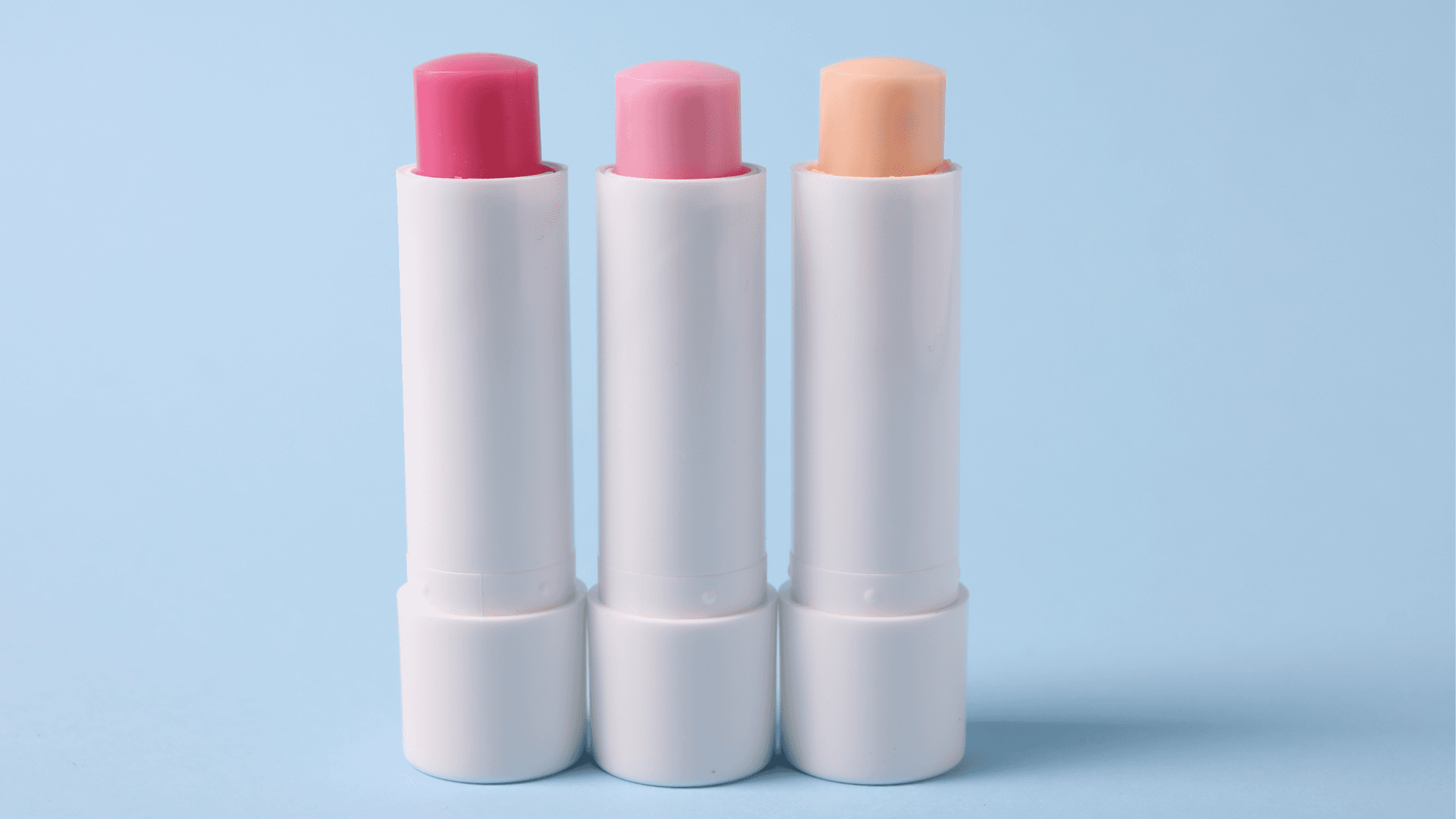
The Blioh Team
June 30, 2024
The Chemistry Behind the Magic: How Color Changing Lip Products Work
Remember mood rings? Those fascinating (yet inaccurate) pieces of jewelry that supposedly changed color based on your emotions? Well, color-changing lip balms and oils use a similar kind of science, but instead of temperature, they rely on your body's unique chemistry to create a custom shade.
Here's the secret: pH plays the starring role.
Our lips, like most of our skin, have a slightly acidic pH, typically around 5.5.
Color-changing lip products contain special ingredients called pH indicators. These molecules have a chemical structure that allows them to exist in different forms depending on the environment (i.e., the pH level). You’re going to need to recall some of your high school chemistry here.
There are two main types of pH indicators used in lip products that make color changes possible:
Acid-base indicators: These change color based on whether the environment is acidic or basic. In a color-changing lip balm, the indicator might be clear or slightly colored at the product's natural pH (slightly acidic). When applied to your lips, the indicator interacts with your natural lip pH, potentially causing it to shift color and reveal a new shade.
Metal complexes: These indicators incorporate metal ions that bind to different molecules at various pH levels. In a lip balm, the metal complex might be formulated to appear clear at the product's pH. Upon contact with your lips, the indicator interacts with your lip chemistry, causing the metal ion to bind with different molecules, resulting in a visible color change.
So, the color you see on your lips is essentially a reaction between the pH indicator in the product and your own natural lip chemistry. Pretty cool, right?
Customization of Color Changing Lip Products
While it's true that human skin generally has a pH range from 4.5 to 5.5, the perceived color change from products containing pH-sensitive dyes can still vary among individuals due to several factors. While the color will react to your individual lip pH, the range of color change might still be pretty limited. So if your friend’s lips are bright pink, maybe yours might be a subtler shade of pink using the same product. Here are the factors that can cause the difference in shades:
Moisture and oil: Besides pH, factors like saliva (which can be slightly alkaline) and even sun exposure can influence the final color. Some color-changing lip products are formulated to react with moisture levels as well. The amount of natural oils and moisture on the skin can vary significantly among individuals. These variations can affect the intensity and exact shade of the color produced by the dye.
Skin Temperature: Skin temperature can influence the reaction of the dyes. Warmer skin may cause a slightly different color outcome compared to cooler skin.
Skin Type: Different skin types (dry, oily, combination) can interact differently with the dyes, leading to variations in the final color. Again, similar to above, oily skin may simply have more moisture or oils than compared to dry skin.
Application Method: The way a product is applied (e.g. The thickness of the layer, whether it's blended or left to sit) can also impact the resulting color.
Underlying Skin Tone: The natural undertone of an individual's skin (cool, warm, neutral) can affect how the color is perceived once the dye reacts. For example, a pink undertone might enhance the pinkish hue, while a yellow undertone might mute it.
Environmental Factors: Humidity and ambient temperature can also play a role in how the dyes react on the skin, leading to slight variations in color.
Most Commonly Used Color Additives
So now we know that the science behind these color-changing effects involves pH sensitivity and the interaction with skin's natural oils and moisture. Let's look at the most common additives that are used for these applications.
Red 27 and Red 21 are color additives commonly used in cosmetics, particularly in products like lipsticks and blushes, for their color-changing properties.
Red 27 (CI 45410)
Chemical Structure and Properties
Red 27, also known as CI 45410, is a synthetic dye belonging to the fluorescein family.
It is a water-soluble dye with a bright red color.
Mechanism of Color Change:
pH Sensitivity: Red 27 exhibits a color change in response to pH variations. In the cosmetic formulation, it often appears as a pale or clear gel. When applied to the skin, the slightly acidic nature of the skin (typically around pH 4.5 to 5.5) causes the dye to transition to a bright pink or red color.
Moisture Interaction: The interaction with the skin's natural oils and moisture can also affect the dye, enhancing its color intensity. The dye may bind to the skin's surface, leading to a more vibrant and long-lasting color.
Red 21 (CI 45380)
Chemical Structure and Properties:
Red 21, also known as CI 45380, is another synthetic dye in the fluorescein family.
It is similar to Red 27 but has slight structural differences that affect its color properties.
Mechanism of Color Change:
pH Sensitivity: Like Red 27, Red 21 is pH-sensitive and changes color upon contact with the skin. The pH of the skin can cause it to develop a bright red or pink hue.
Oil and Moisture Interaction: The presence of skin oils and moisture can further intensify the color change, making the dye more noticeable and ensuring it adheres well to the skin.
Applications in Cosmetics
Benefits
Customizable Color: The pH sensitivity allows the color to adapt to the user's skin, creating a personalized shade.
Visual Appeal: The color-changing effect adds a unique and attractive element to cosmetic products, enhancing the user experience.
Safety and Regulation
Both Red 27 and Red 21 are approved for use in cosmetics by regulatory bodies like the FDA, but their concentrations are regulated to ensure safety. It's important for manufacturers to adhere to these guidelines to prevent potential skin irritation or allergic reactions. Most of these colorants have strict thresholds for concentration that make them appropriate or inappropriate for cosmetics use.
Products Containing Red 27 (CI 45410)
If you are specifically looking for products that contain Red 27, you might want to try the following:
Dior Addict Lip Glow: This lip balm enhances the natural color of your lips by reacting to the pH level of your lips.
Yves Saint Laurent Volupté Tint-In-Balm: A hybrid lipstick that combines nourishing balm care with glowing, sheer color for a touch of tint.
Benefit Cosmetics Benetint Cheek & Lip Stain: A liquid lip and cheek stain that changes color based on your skin's chemistry.
Givenchy Rouge Interdit Vinyl Color Enhancing Lipstick: A lipstick that interacts with the natural pH of the lips to create a unique, tailor-made color.
Smashbox O-Gloss Intuitive Lip Gloss: A gloss that changes from clear to a unique shade of pink based on your individual skin chemistry.
Products Containing Red 21 (CI 45380)
If you are specifically looking for products that contain Red 21, check these ones out:
Maybelline Baby Lips Glow Balm: A hydrating lip balm that reacts to your lips' natural chemistry to create a personalized pink glow.
Lipstick Queen Frog Prince Lipstick: A green lipstick that transforms into a rosy pink shade when applied to the lips.
Barry M Color Changing Lip Paint: This lipstick changes color based on your body chemistry, providing a unique shade for each user.
Physicians Formula pH Matchmaker pH Powered Lip Gloss: A lip gloss that changes color according to the pH level of your lips.
Winky Lux Flower Balm: A clear lip balm with a real flower inside that changes color based on the warmth of your lips.
Alternative Colorants & Dyes Used
There are several other colorants that are used in cosmetics and can exhibit similar color-changing properties or are used for their vibrant colors. These tend to be less commonly seen in the market, but they do exist. Here are a few notable ones:
D&C Red No. 33 (CI 17200)
Properties: It is a synthetic dye that provides a red to pink hue.
Uses: Commonly used in lipsticks, blushes, and other cosmetic products.
Color Changing: While not typically known for dramatic color-changing properties like Red 27 and Red 21, it can still react to pH changes and skin chemistry to a lesser extent.
D&C Orange No. 5 (CI 45370)
Properties: Provides a vibrant orange color.
Uses: Often found in lip products, nail polishes, and some face makeup.
Color Changing: Can exhibit slight color changes when in contact with skin or other chemicals due to its pH sensitivity.
D&C Red No. 28 (CI 45410:2)
Properties: Similar to Red 27, it is a bright red dye.
Uses: Used in lipsticks, lip glosses, and other cosmetics for its vivid color.
Color Changing: Like Red 27, it can change color based on pH levels, making it useful for color-changing lip products.
D&C Violet No. 2 (CI 60725)
Properties: Provides a violet to purple hue.
Uses: Used in various cosmetics, including hair dyes, eyeshadows, and lip products.
Color Changing: Known to change slightly based on pH and can shift in shade when mixed with other ingredients.
D&C Yellow No. 10 (CI 47005)
Properties: Provides a bright yellow color.
Uses: Commonly used in nail polishes, eyeshadows, and other cosmetics.
Color Changing: Can exhibit minor color changes when interacting with other ingredients or pH variations.
FD&C Blue No. 1 (CI 42090)
Properties: Known for its bright blue color.
Uses: Found in a variety of cosmetic products including bath products, makeup, and hair dyes.
Color Changing: Can change color when mixed with yellow dyes to produce greens or with red dyes to produce purples.
Color-changing lip balms and oils offer a fun and interactive way to add a flush of color to your lips. While the science behind them might not be as complex as rocket science, it's a clever use of chemistry to create a personalized beauty experience.
As a final note, we love experimentation and self-expression through all things cosmetics here at Blioh. Blioh is the #1 virtual try-on (VTO) makeup app for consumers. We’re constantly adding new products for virtual try-ons and color changing product VTOs are on our roadmap. If you’d like for us to prioritize adding virtual try-ons for these items sooner rather than later to the platform, please contact us to let us know.






